Description of the potato variety Natasha, its characteristics and yield
Potato Natasha is a variety that is highly productive and promising. Compared to other varieties, it was recently bred, but this did not prevent it from quickly becoming a favorite of summer residents and gardeners. Every year it gains more and more popularity. Studying the description of a culture allows one to be convinced of its benefits.
More about the variety
Potato bushes do not grow too tall. They have an upright intermediate type. Large leaves have a slight waviness. The tops are light or dark green in color. The whitish flowers are endowed with a noticeable blueness with bright yellow pistils.
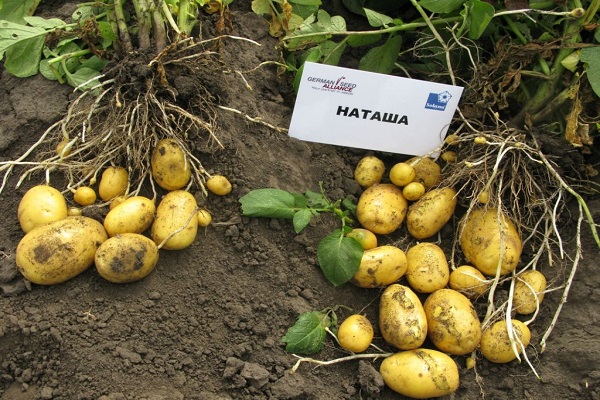
Varietal potatoes are of medium size, oval. Root crops in tubers are smooth, covered with even skin. In rare cases, clumsy occurs. The light yellow potato skin is covered in places with almost invisible eyes.
The weight of one fruit ranges from 95–140 g. In the place of the cut, you can see the tender pulp of a uniform dark yellow color. Natasha potatoes are valued for their high starch content. As a rule, the percentage is 11-13.6%.
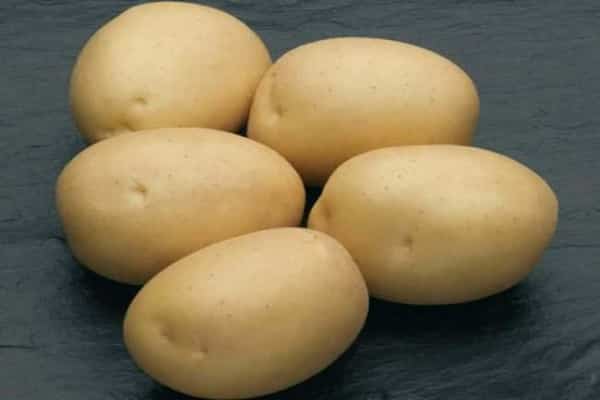
Growing
The site on which the potato variety Natasha will be planted is prepared in the fall. The earth is dug deep and saturated with mineral and organic fertilizers. Organic matter is applied in the following way:
- sandy soil - peat, rotted manure and clay (all 10 kg each);
- clay soil - 10 kg of peat (humus);
- peat soil - sand, clay, rotted manure (1 bucket of each substance).

If there is no humus, it is replaced with bird droppings. Dilute 200 g in warm water and water the land. Regardless of the above actions, 200 g of wood ash, 20 g of superphosphate and 10 g of potassium fertilizer are mandatory. 1 m of acidic soil, where potatoes will be planted, quench 200 g of lime.
In the spring, the land for potatoes is dug up again. Weeds are removed. When planting a potato variety, 5 tablespoons of wood ash, as well as 400 g of humus, are introduced into the hole. It is sprinkled with earth so that it does not burn the roots.
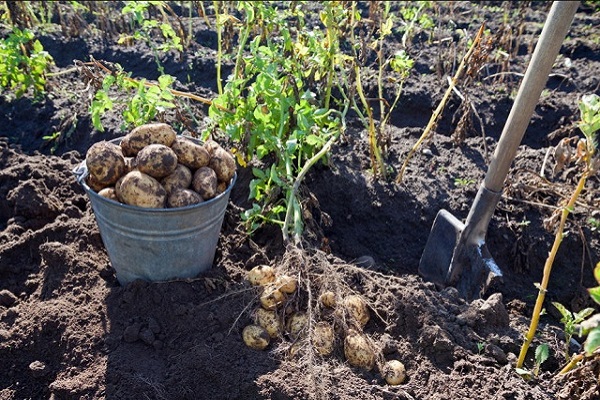
Landing
It is carried out according to the principles of planting early crops. Tubers are taken out of storage at the end of winter for acclimatization. If necessary, they are sorted out. Tubers of medium size without damage are subject to germination.
For fast and efficient germination of potato varieties, sufficient lighting is observed. After the sprouts have appeared, the potatoes are treated with growth stimulants.It can be Hercules or any other product purchased from a specialty store. To preserve the potato planting material, it is sprayed with another drug - "Prestige".
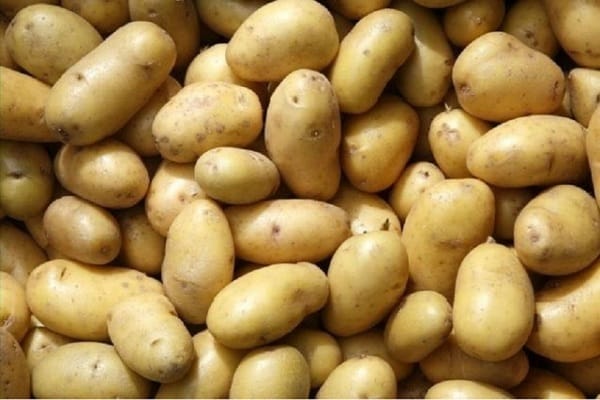
General landing rules
For effective planting of a vegetable, simple rules are followed:
- On a small plot of land they use a shovel, on large ones - a potato planter. In the first case, an ordinary bayonet shovel is suitable, which is easy to make holes.
- You do not need to bury potato tubers, as this creates inconvenience when digging. After hilling, a ridge will appear on top.
- Distance between holes - 30–35 cm. Between rows - no more than 70 cm.
The parameters of the gap ensure uniform heating of the soil and the presence of lighting, which the potatoes need. The variety grows well, as evidenced by large bushes. This distance makes it easy to remove weeds and huddle the plant. The fully planted potato area is leveled with a rake or harrow.
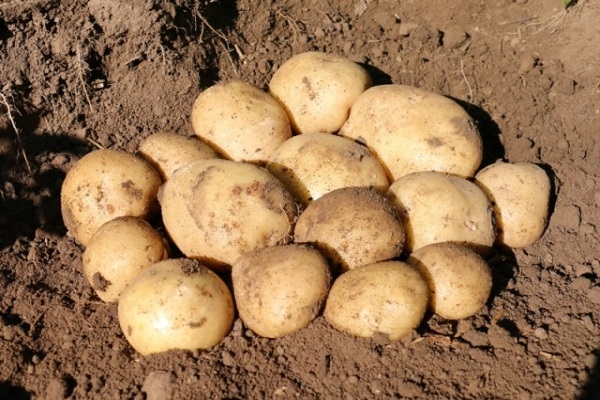
Care features
During the growing season, potatoes compare favorably with most early varieties in resistance to adverse environmental manifestations. Modern agricultural techniques allow you to form a high-quality potato crop. Among the total number are:
- Before the emergence of sprouts, the land plot is cleaned from weeds, preventing the formation of an earthen crust on the surface. Otherwise, it interferes with aeration, blocking the access of oxygen to the plant roots.
- To protect seedlings from late frosts, the first hilling of potato tops is carried out. By completely covering the sprouts with soil, they prevent weeds and retain moisture in the ground.
- If in the fall the soil is enriched with fertilizers, and during the planting of potatoes, an additional amount of them is introduced, during the season of growth and development they cost only two dressings. One of them is foliar.
- Care activities for the potato variety, including irrigation, contribute to the full formation of tubers. In this regard, care should be taken, since an excess of moisture causes the crop to rot. Watering questions are treated carefully.
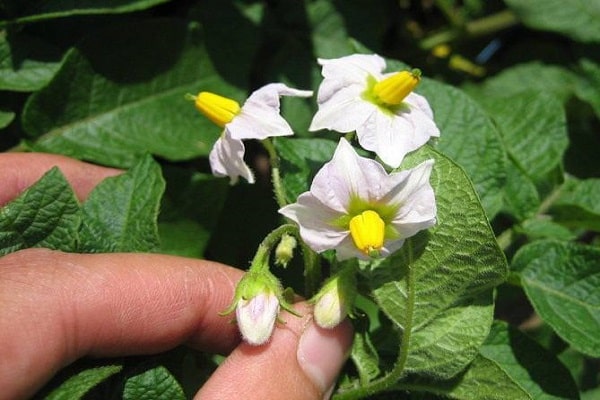
Despite the observance of the rules of cultivation and care, it is required to periodically inspect the potato tops. A number of factors can contribute to pest attack and disease development in potatoes. If the first signs of the disease were noticed, a number of protective measures must be taken. These include treating plants with insecticidal and fungicidal preparations.
Advantages and disadvantages
The potato variety is not as widely used as others, as it was registered in the country's register not so long ago. The description of the variety indicates a significant number of advantages. By planting potatoes, the agronomist gets the following:
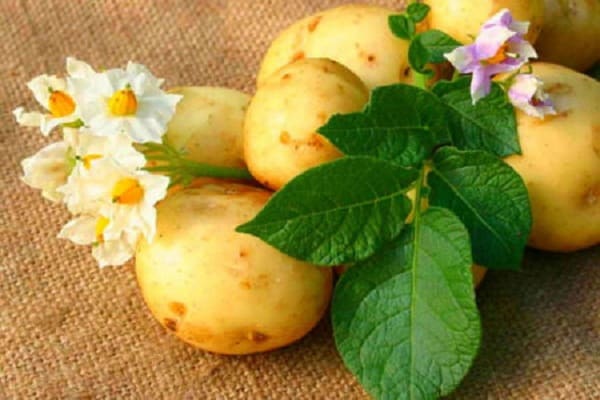
- marketability of root crops from 70 to 95%;
- a large number of tubers in one bush;
- early yield;
- high yield percentage;
- impeccable pulp taste;
- keeping quality of tubers during long-term storage.
During storage, 5 to 7% of the potato mass deteriorates from the total crop. The fruits of this variety have high taste and impeccable appearance. The variety does not have pronounced disadvantages that should be paid attention to. Moreover, it does not lose its shape during cooking or frying.
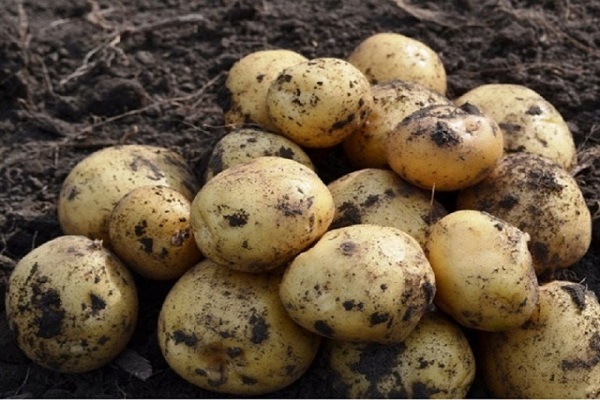
Pests and diseases
The characteristic of the vegetable indicates the high protective properties of the immune system. This makes the potato immune to pests. The vegetable is resistant to many diseases, including potato cancer, Y-virus, rhizoctonia, tuber rot, and golden cyst nematode. This feature is provided by the protective properties of the immune system.
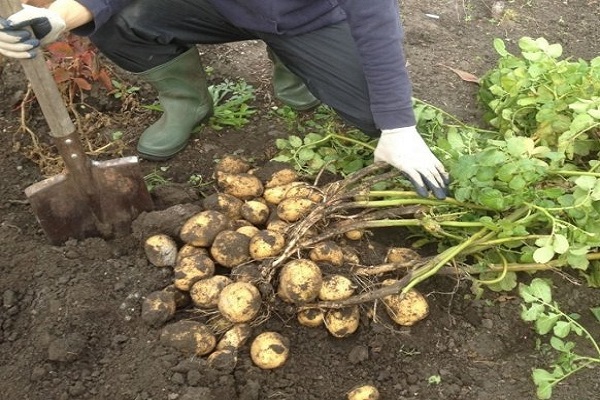
Harvesting and storage
Experienced gardeners, before digging up root crops, cut the tops in order to prevent the disease from entering the tubers. In this case, the potato skins become coarser and the flesh denser. In no case should you delay the collection of tubers. The best period is a sunny day.
Before long-term winter storage, vegetables are kept in a dark and dry room. The potatoes are sorted for seeds and food. Potato variety Natasha is stored in a basement or cellar in wooden boxes or nylon bags. If these are boxes, they are stacked in stacks filled with potato mass.
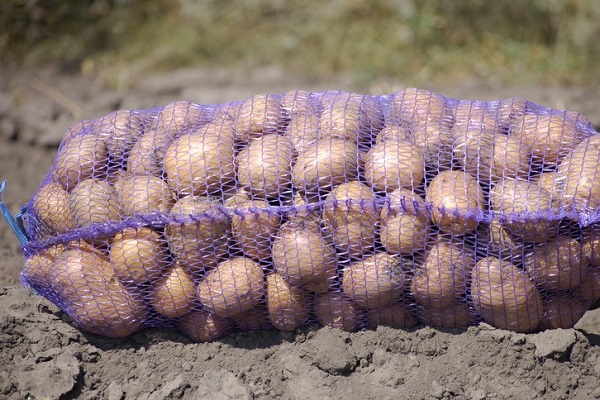
Gardeners about the potato variety
If gardeners have doubts about whether to try to plant a variety of German breeding on their site, it is worth contacting experienced summer residents. In general, reviews about Natasha potatoes are only positive.
A vegetable that gives a large number of tubers is suitable for frying, cooking, stewing and baking. Many are attracted by the color of its pulp and rich potato flavor.
The annual planting does not affect the yield of the tubers in any way. The only thing is that it is necessary to change the landing site. Seedlings sprout quickly, so fresh new potatoes can soon be eaten. For the harvest to always be pleasing to the eye, you need to follow the rules of planting, care and harvesting.
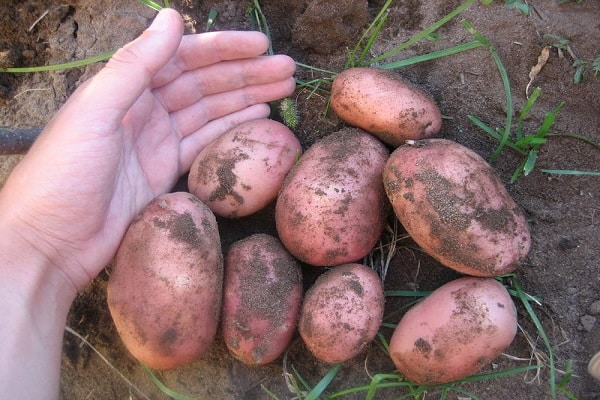
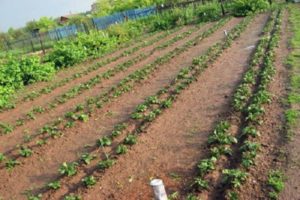



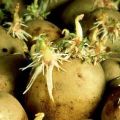
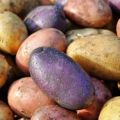
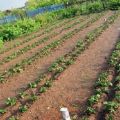
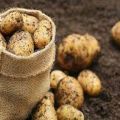


Since the name of the variety is consonant with my name, I planted it on one hundred square meters last year. What to say? I am satisfied. As with other varieties, I use a growth promoter BioGrow, so I didn't even doubt that there would be an excellent harvest. Taste qualities are also excellent. The potatoes were stored perfectly all winter, however, by March this variety was gone - they ate. 🙂